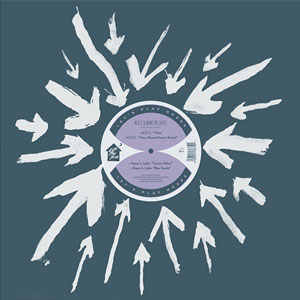M.D.C. & Name In Lights Stockholm Stories
Let’s Play House, the multifaceted New York label run by Jacques Renault, Nik Mercer, and […]

Let’s Play House, the multifaceted New York label run by Jacques Renault, Nik Mercer, and James Friedman, has released music from an impressive array of international artists since its minting in 2011. From Hungary’s San Laurentino to Portugal’s Johnwaynes, the Let’s Play House catalog bounces across the map, and its eclectic sonics—which take in all manner of modern variants on house and disco—tend to follow suit. As might be expected from its party-veteran founding trio, though, its releases are tailored with the working DJ in mind. Stockholm Stories surveys the Swedish group Name In Lights, who seem to epitomize this ethos.
The record’s a-side comes from Emir Krkic, one of the group’s members, who has styled himself as Muslim Disco Club (or M.D.C.). Without taking into account the politics of Krkic’s moniker, there is a clear East-meets-West vibe on “Alma,” predominantly in its rippling, interwoven guitar lines, which call to mind Turkish or Balkan psych. Although these are underpinned by stomping kicks, rustling percussion, and a driving bassline, they remain the stars of the show. Kornél Kovács, a rising star of Sweden’s house scene and co-founder of the eminent Studio Barnhus label, contributes a remix of the track. It’s a shifty blend of streetwise, Todd Terry-style sample house and Krkic’s spacey original. Kovács splices sirens and hip-house vocal cuts in with Krkic’s introspective pads and guitar gestures, and while this combination reads like a mess, the producer craftily pulls it off.
On the flip, Krkic rejoins Filip Johnsson and David Irigoyen, the other members of Name In Lights. Interestingly, “Curious Yellow” is more refined than the work on the a-side, offering a sort of downcast sexiness amid a pumping disco bump. A pitched-down vocal yearns, “you know I want you so bad,” as dubby keys float and woosh around it, effectively weighing down the drums in its pensiveness. “Blue Swede,” meanwhile, makes more sense of the group dynamic. Opening with a kinked, tropical polyrhythm and a purring bassline, the track unexpectedly breaks down to reveal an acid line before the exuberant beginning eventually returns, acid in tow. In the track’s ebb and flow, one can hear the synchronicity between the group’s personalities. It plays like a prototypical “live set” track, as it’s uncomplicated but dynamic. “Blue Swede” caps off a varied, solidly tooled package that, in at least one instance—depending on the style of set—should more than prove its worth on the floor.

